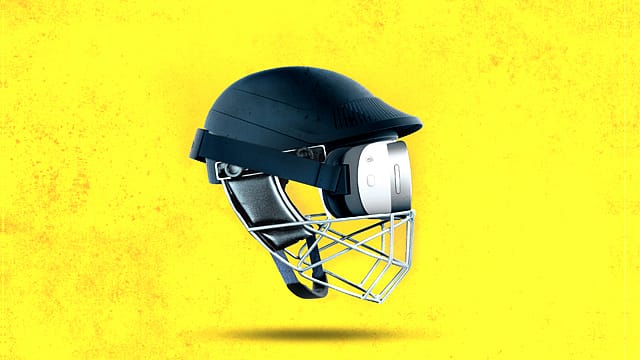Hotstar’s VR venture: Novelty or game changer?
ADVERTISEMENT

When Star India announced its plan in January to live-stream Indian Premier League (IPL) matches in virtual reality (VR) on its digital platform Hotstar, cricket fan Arvind Krishna was excited. The diehard cricket lover, who handles social media for an online Indian cricket fan forum, was finally going to get an opportunity to put his VR headset “to perfect use”. “I think people are going to have fun with it. You won’t get the vibe of the stadium but I think it will be more immersive. Here you have control of the time and camera angles,” says Krishna. “You are no longer mere spectators watching the game passively, VR will allow us to be a part of the game in real time. And in a sport like cricket, it’s a big deal.”
It certainly could be a big deal for Star India: The move is likely to help Hotstar reach more viewers during the blockbuster tournament scheduled between April 7 and May 27. IPL is aiming to reach 700 million viewers across TV and digital formats. Hotstar reached around 130 million last year and is hoping to increase that substantially this time thanks to the VR technology. How does it plan to do that? To begin with, it hopes the immersive experience will draw more viewers. It is also banking on other features such as dedicated cricket emojis for viewers to share their views and the ability to access on-demand replays and highlights. Besides, the Hotstar app will allow users to pause the match at any given time and get a 360-degree view.
VR is still a new technology in India and market penetration for a nascent technology is always tough at first. But for Hotstar’s CEO, Ajit Mohan, technology is at the heart of shaping the company. He feels sports naturally lends itself to creating amazing VR experiences and Hotstar believes in “shaping consumer habits rather than following them”. “When we launched Hotstar, there was very little belief that India was ready for streaming. The same is true now for VR. There may be scepticism that it is too early for VR. But as the leaders in streaming, we believe it is our obligation to constantly raise the bar,” he says. “We have been very focussed on using technology to shape new consumer experiences.”
December 2025
The annual Fortune 500 India list, the definitive compendium of corporate performance, is out. This year, the cumulative revenue of the Fortune 500 India companies has breached $2 trillion for the first time. Plus, find out which are the Best B-schools in India.
One of the biggest challenges is that Internet speeds are not fast enough to stream VR content live.
This isn’t Hotstar’s first VR experience. It streamed the 2016 Kabaddi World Cup games live in stereoscopic 3D virtual reality. In a blog titled ‘VR explorations at Hotstar’, Manu Pushpendran, director, product management at Hotstar, spelt out details about the production setup on the field for the kabaddi tournament. According to the blog, Star India had a total of 12 cameras mounted on two pods, one for 2D streaming and another for 3D. “The experiences that we are building this year for Vivo IPL are a continuation of what we believe are India-first and cricket-first propositions. This will not be a one-off. We will continue to be at the cutting edge of technology, and VR is a part of that,” says Mohan.
Star India is expected to completely overhaul its production infrastructure to shoot in VR. “In Star India, we have a partner that not only believes in the immense potential of the IPL, but also believes in pushing the boundaries of sports broadcasting, which gives it the power and ability to take the IPL to even greater heights,” Rahul Johri, CEO, BCCI, said in a statement. “With even richer content across a six-month entertainment calendar, we are happy it will delight a much larger number of cricket lovers across the length and breadth of India.”
But one of the challenges is that not everybody owns a VR headset. Hotstar sees this as an opportunity to usher in new technology and it plans to open VR stores for everyone to experience this feature ahead of the IPL. But that might not be enough. People who want to watch the tournament live on their VR headsets face some technical challenges. One of the biggest problems is that Internet speeds are not fast enough to stream the content live. “The Internet connection will not be sufficient to show 4K or ultra HD screening. It will downscale depending on the Internet speed. Whatever Hotstar is trying to do is for the next generation when Internet speeds are going to be much higher,” says Pushpak Kypuram, managing director, Archimaze, a Hyderabad-based architectural visualisation company, which deals with virtual and augmented reality content.
But Kypuram is optimistic about the business. He says every basic smartphone now comes with a gyroscopic sensor, which is essential for viewing VR content. “This means we are moving in that direction. This venture will definitely be successful because no matter what, people want more choices,” he adds. “What is required is one major player start getting into emerging technologies and build a good engagement platform for emerging industries. Once it starts, it spreads like forest fire.”
While sports analysts are largely optimistic about Hotstar’s move to get into VR, they recognise the market is still not open for full adoption of the technology. But they hope the IPL will change that.
“VR in India has shown promising potential with major broadcasters and startups creating next-gen experiences for sports fans. While the market is still in an early adopter phase, affordability and access to devices might help cross the chasm,” says Tenzing Niyogi, segment leader (sports), EY India. “Moreover, applications of VR hold immense potential in player training and development, which could redefine how teams compete, across sports.”
